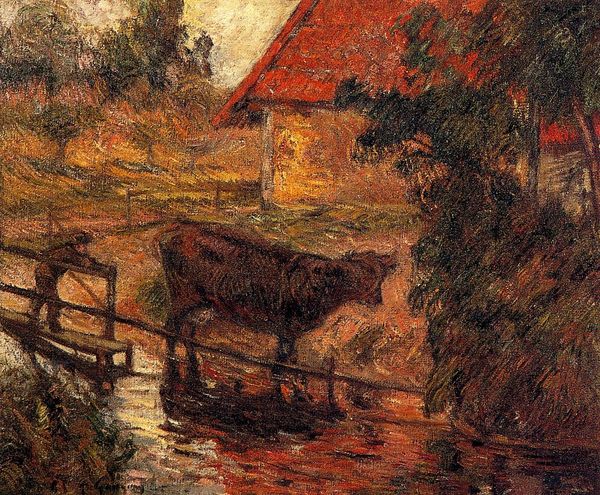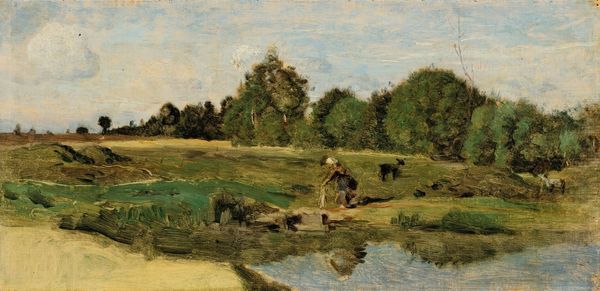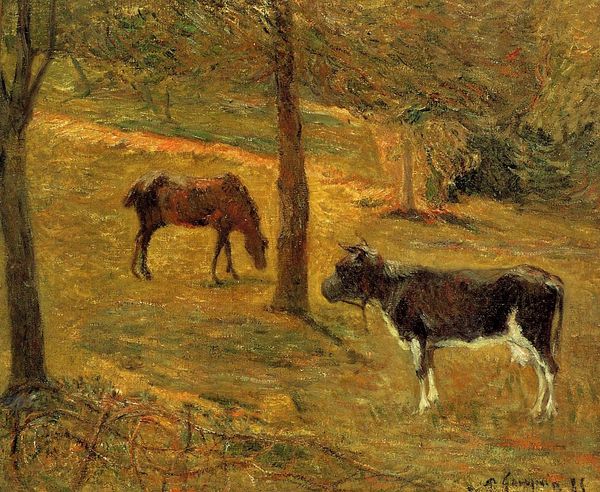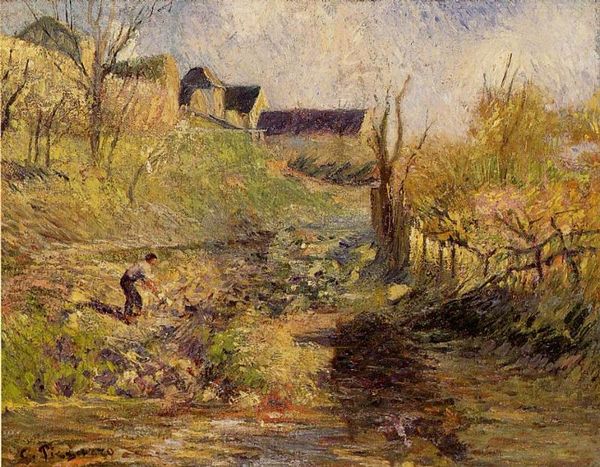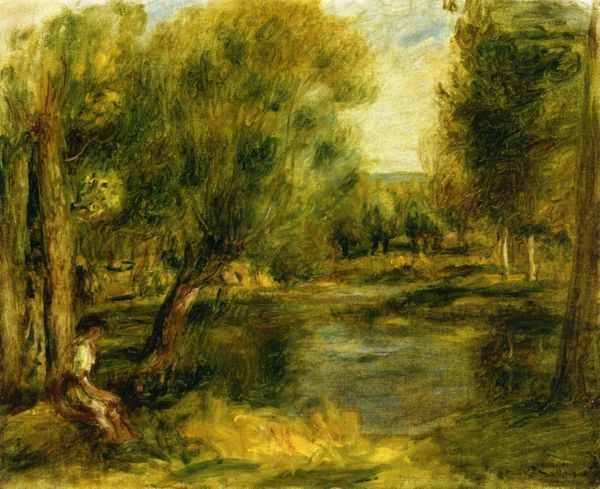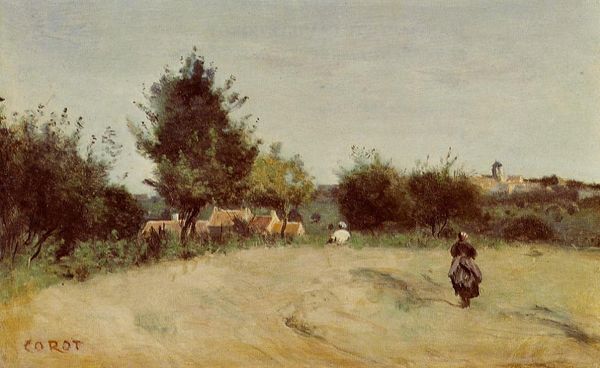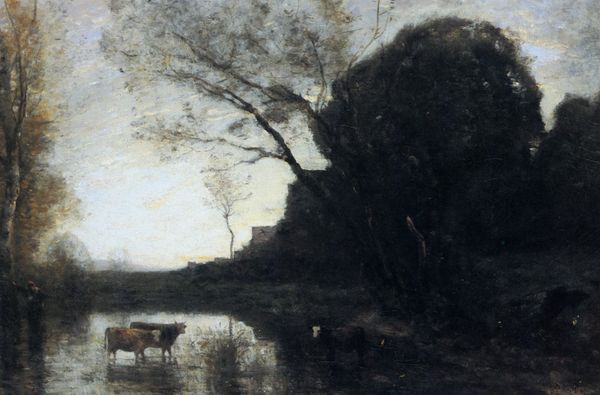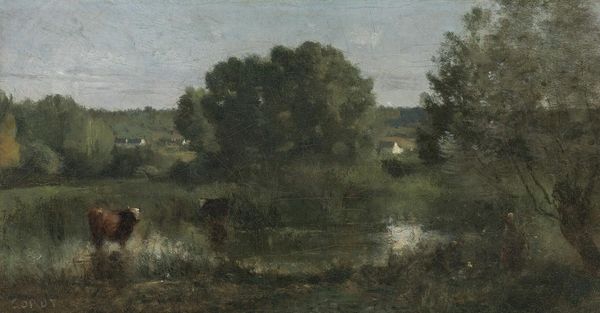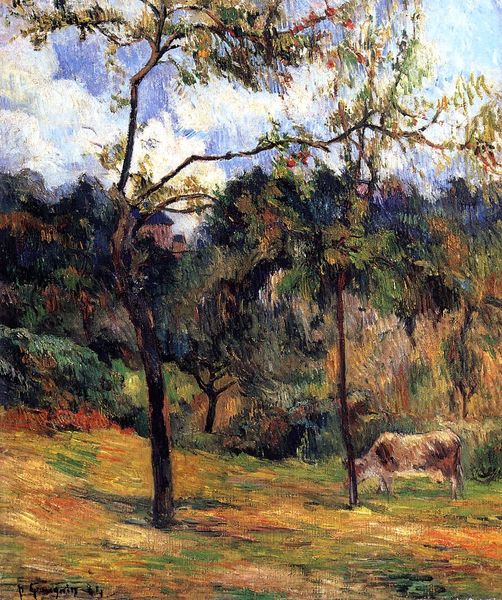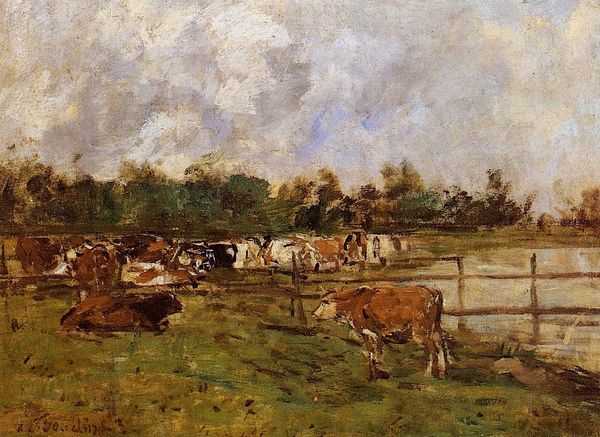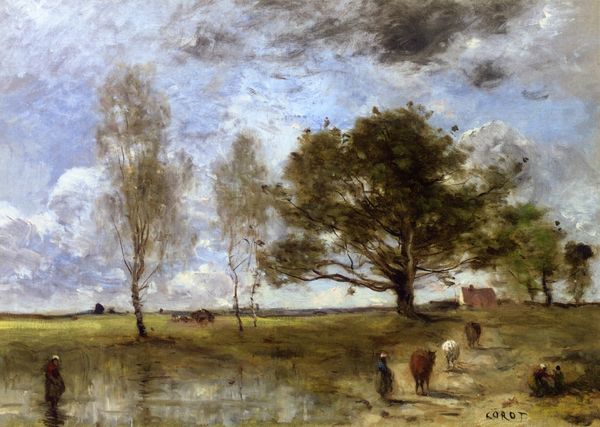
painting, oil-paint
#
tree
#
animal
#
rural-area
#
painting
#
impressionism
#
impressionist painting style
#
oil-paint
#
landscape
#
impressionist landscape
#
figuration
#
oil painting
#
post-impressionism
Copyright: Public domain
Editor: This is Paul Gauguin's "Landscape with Cows in an Orchard," painted in 1885. It's an oil painting, and the textures of the landscape feel very present. I’m drawn to the materiality of the scene - the rough brushstrokes depicting foliage, and the almost weighty presence of the cows. How does the social context surrounding Gauguin impact how we interpret his material choices? Curator: The key lies precisely there. Gauguin was operating within a late 19th-century art market grappling with industrialization. His return to seemingly ‘primitive’ subject matter, like rural landscapes and later, his focus on Tahiti, involved a romanticization of labor disconnected from industrialized production. Observe how he handles paint – thickly applied, breaking with academic smoothness. Do you think this material emphasis elevates or critiques the inherent social division between "high art" and labor-intensive, everyday tasks? Editor: I think it does both, almost simultaneously. There’s a deliberate focus on process – the visibility of his brushstrokes. This acknowledges the labor involved in creating the piece itself. However, painting a landscape still differs vastly from agricultural labour, it idealizes farm work by translating the manual toil into an aesthetic experience, doesn't it? Curator: Precisely. It raises questions about the commodification of both art and nature. The cows, themselves products of agricultural labor, become picturesque elements within a landscape now intended for consumption by an urban audience. How do we reconcile the "authenticity" Gauguin seems to seek with the market forces at play? It invites us to analyze art within systems of production and consumption. Editor: I hadn’t considered the cows in that way, almost as props. That shift really helps understand how material choices can comment on social and economic landscapes. Thank you. Curator: Indeed, by grounding our analysis in materiality and context, we begin to understand how artworks participate in complex economic and social relations, far beyond simply aesthetic concerns.
Comments
No comments
Be the first to comment and join the conversation on the ultimate creative platform.
